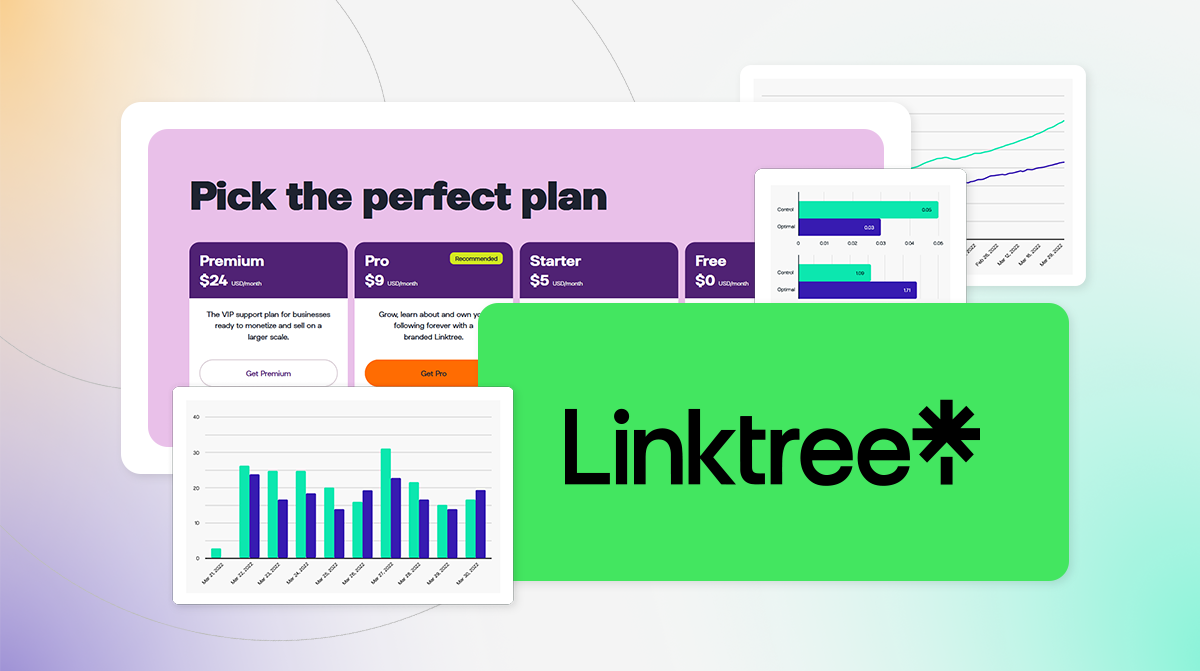Could you walk us through your internal decision process when it came to overhauling your pricing strategy?
Our ethos has always been, “never remove from free, always add to paid.” We recognized that we have such a vast and varied user base and there's a real opportunity there to build out different packages based on those different user personas. So we worked with an external agency to do that sort of stock take of “Who's using our product?”, “What do they like about it?”, “Which features are they using?”, “Which features are they willing to pay for?” And that was a huge undertaking.
We surveyed our users, we surveyed prospects, we understood how they felt about our competitors, general willingness to pay, which were the most valuable features from their perspective, and then we built out our new four-package lineup to better recognize those different personas and different wants and needs within our user base.
The obvious next step for us was to test out how they would perform in the wild. With that new lineup and some price points that we'd identified through the process with the external agency, we really wanted to test them and how they would actually perform with real customers. And that's where we found value in Corrily.
What other pricing platforms or solutions did you compare Corrily to?
We found out about Corrily through a LinkedIn post or saw it advertised somewhere. And we didn't really look to competitors because it was the kind of right fit and had the kind of hallmarks of a startup – the type of company we felt we could work with and were really aligned with our ways of working.
How did you get everyone on board in terms of price experimentation?
I think naturally we're more inclined to experiment. There's a more of an experimentation appetite maybe because we're a fairly young company. It did take some convincing. I think what we really tried to convey to the business is that we were in for a bit of a rollercoaster, but the point that we would reach where we stabilized was set to be so much better than where we were now that we were willing to go on that journey and take the hit, and that translated pretty well for the business.
Everyone was aligned on the fact that once we do ideally optimize prices, we'll be at a stage where we can generate more MRR per signup, which will just be beneficial for the whole company.
How did you feel about working with Corrily? What were you able to achieve by working with Corrily?
We just learned so much about our product in different markets with the authenticity of real users and real data. Previously, we'd surveyed creators and users in a pretty non-real (way). They were running through a survey and answering questions about what they were willing to pay for certain features kind of in a theoretical sense.
With Corrily, users also have to put their money where their mouth is. They also have to go on to pay for it. So it's the purest form of testing willingness to pay. So that's probably where we’ve learned the most. Overall, being able to track performance, and being able to switch Corrily [experimentation] on and off has been a real safety net for us as well. When we've seen metrics perform differently from how we expected, we've been able to switch it off, keep the business on board, pivot our strategy, and things like that.
Probably I guess the agility and receptibility of the product have been really good and suit the experimentation way that we work. And being able to easily integrate with our billing software was an added bonus.
If you had any message to give to other companies considering price experimentation or considering using Corrily, what would it be?
Be really clear on what you're optimizing for, like we shifted the goal post a little bit and we wanted to introduce multiple variables at the same time. I think that's probably something that we experimented with a bit too much, and we tried to do a lot in a short amount of time.
Make sure your way of communicating the impact upfront is really clear. Getting the business on board and preparing them for the impact that serving really high price points, really low price points and everything in between will have on charts and dashboards that senior stakeholders who may not be really close to the project will see. And then taking them along the journey is really important. Stakeholder buy-in has probably been our biggest challenge and that's where things like Corrily dashboard are really handy for.
Choose price points you'd be willing to potentially charge customers from the outset. Although it's good to test wide ranges of prices, ultimately you are going to potentially use these price sets to charge customers. So having prices that are in that potentially charging range is a good tip.

